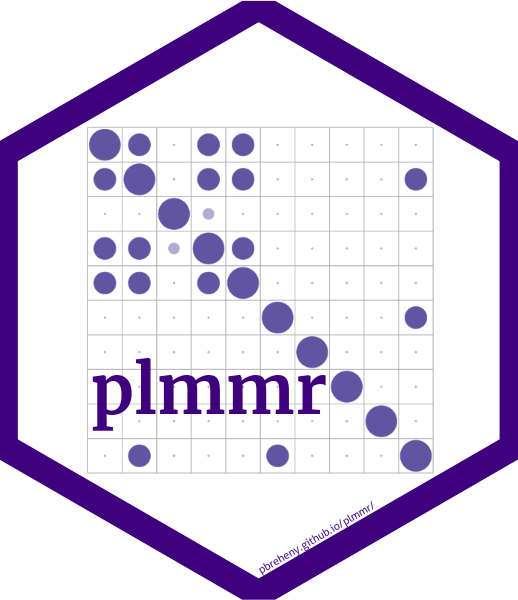

The hardware and bandwidth for this mirror is donated by METANET, the Webhosting and Full Service-Cloud Provider.
If you wish to report a bug, or if you are interested in having us mirror your free-software or open-source project, please feel free to contact us at mirror[@]metanet.ch.

The plmmr (penalized
linear mixed models
in R) package contains functions that fit penalized
linear mixed models to correct for unobserved confounding effects.
To install the latest version of the package from GitHub, use this:
devtools::install_github("pbreheny/plmmr")You can also install plmmr from CRAN:
install.packages('plmmr')For a description of the motivation of the functions in this package (along with examples) refer to the second module of this GWAS data tutorial
library(plmmr)
X <- rnorm(100*20) |> matrix(100, 20)
y <- rnorm(100)
fit <- plmm(X, y)
plot(fit)
cvfit <- cv_plmm(X, y)
plot(cvfit)
summary(cvfit)plmmr? And how well does it scale?To illustrate these important questions, I created a separate GitHub
repository that has all the scripts for a plmmr
workflow using publicly-available genome-wide association (GWAS) data.
The main takeaway: using GWAS data from a study with 1,400 samples and
800,000 SNPs, a full plmmr analysis will run in about half
an hour using a single core on a laptop.
Three smaller datasets ship with plmmr, and tutorials
walking through how to analyze these data sets are documented in the documentation site. While
these datasets are useful for didactic purposes, they are not large
enough to really highlight the computational scalability of
plmmr – this is what motivated the creation of the separate
repository for a GWAS workflow.
The branches of this repo are organized in the following way:
master is the main (or ‘head’) branch.
gh_pages is where we are keeping all the
documentation for plmmr
gwas_scale is an archived branch
that contains the development version of the package I used to run my
dissertation analysis. Will delete this eventually.
These binaries (installable software) and packages are in development.
They may not be fully stable and should be used with caution. We make no claims about them.